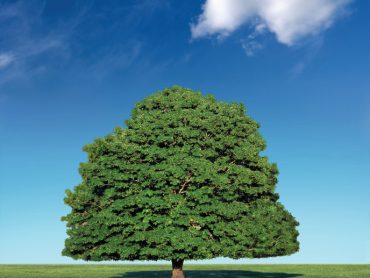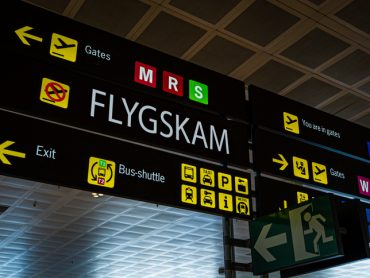Hotel Exterior Restorations to Enhance Sense of Place
Hotel architecture is one of the more intricate and creative aspects of our industry. Even though most of us will never have any input in the design of a new property from the ground up (leave that to the accredited architects), there are still numerous opportunities to leave your mark on a hotel via smaller-scale refurbishments projects – necessary tasks to keep up with the times.
Guestrooms need reconfiguration and new furniture purchases to better accommodate the modern, tech-centric business traveler. Lobby spaces require alterations to enhance their ‘third space’ hybrid functionality. Restaurants that feel dated should be renovated as should their menus. Bathrooms are constantly audited. And all other soft elements must go through the necessary cycle at least once a decade.
An aspect of architecture and design that is often neglected, though, pertains to that of a hotel’s exterior and how you populate these spaces to create dramatic points of interest and to generate a distinct sense of place. To borrow a term from the real estate field, what we are discussing here is ‘curb appeal’ – that gut reaction your guests feel when they first lay eyes upon your property, even before they enter the lobby or interact with a staff member.
The primary reason for establishing a strong sense of place even before guests physically enter the hotel is to tap into their emotional states of mind and build positive sentiments right from the start. A grand art deco facade and carport primes visitors to believe that they are in for a luxurious, sophisticated experience. Postmodern materials and angles at the entranceway cue guests to anticipate other hip and novel design features throughout their stay. Clean exteriors assure guests that the interiors are likewise hygienic. Eclectic sculptures build anticipate for more curious attractions in the lobby and corridors.
As you can see, there are many ways to enhance curb appeal and exterior sense of place. While many of these upgrades will break the bank, my bet is that you have neither the disposable cash nor the authorization to initiate such a sweeping overhaul. Hence, we must get creative with our solutions, and below are a few general suggestions to help you find something that works.
Façade Facelifts
As a former professional engineer, I can say with hypothesis-tested certainty that once a hotel is built, it takes more than a pretty penny to enhance or modify a building’s outward architecture to the public. That said, we are all guilty of judging a book by its cover, even if this only happens subconsciously. Ergo, there comes a time when power-washing the concrete, repointing the masonry or parging the brickwork mortar simply won’t do and a full-scale facelift is needed to fashion a remarkable sense of place and build anticipation.
Structural modifications are the costliest suggestion here, both in terms of money spent and construction time, but they also have the greatest impact. This is not something done on an ad hoc basis; it can take years of planning to execute a change of this magnitude. Two general observations are that we are moving towards more ‘open design’ with a plethora of glass for better natural light and builders are actively incorporating more recycled materials.
Beyond this, consult an architect near you, keeping on the back of your mind that fashion cannot trump function. That is, you have to strike a balance between creating an impressive entranceway and one that can handle the traffic at peak periods without bottlenecks or convoluted routes to the main lobby floor. I’ve visited quite a few properties where the designers remained entirely ‘off leash’, resulting in some spectacular frontage that functions perfectly…except when arriving guests need directions to find the front desk, an issue that’s doubly trouble during the dinner rush or large events.
Art and Sculptures
When chosen prudently, fine art can act as a focal point for an exterior location or as a divider for multi-use. It can breathe new life into a space as well as drawing the eyes away from the less savory aspects of your façade. We are moving in descending order from most and least expensive, and it’s easy to see why outdoor space can run up a tab. Not only are sizeable pieces costly to produce – often requiring dozens of hours in labor – but they must be made from materials capable of surviving the four seasons.
Additionally, I stress that art affords you the chance to build ties with the community. Thinking beyond inbound links and paltry media coverage, art can be utilized to enrich the local authentic experience. Two examples help demonstrate this hidden advantage. First up is Ojai Valley Inn & Spa nestled in a tranquil Californian valley. Ever the local champion, the resort has bought so many pieces from the region’s artist enclave and the indigenous Chumash tribe that they were able to create their very own Art Walk around the property’s 220 acres. Second is the Hotel Berlin, Berlin, a modern conference-centric hotel that has impeccably married itself to its hometown by purchasing a large piece of the Berlin Wall and displaying it next to the entranceway along with some descriptive labeling.
Water
Fountains or waterfalls incorporated into outdoor sculptures, expensive as they are, hit our senses on a primal level. The sight of flowing, clean water has always been a form of revitalization. The sounds of gently sloshing liquid can also calm us. Occasionally a slight mist will cake your face, simultaneously shooting you with a rush of cold and refreshing your skin. Water vapor even has a satisfying smell to it. The point here is that water acts upon far more than just your eyeballs, and even though its applications are uncommon, it is nonetheless a tactic towards differentiation.
Lighting and Color
As any photographer will tell you, lighting is everything. Would Las Vegas be iconic without its millions of neon lights? How would the art deco properties along Ocean Drive in Miami look at night without a little shine? Chandeliers enchant from their perches atop ballrooms. Christmas trees twinkle through the falling snow and warm our hearts. The pink hue of fluorescent bulbs is palpably distinct from the emblazoned white of OLEDs or the warmth of yellow incandescence. Even the now ubiquitous rows of flatscreen televisions in sports bars can nudge us to feel a certain way about a space.
In short, when you change the lighting, you change the game all together. This is doubly true even the sun dips below the horizon. Moreover, as light is only as good as the surfaces it reflects off of, any discussion along these lines must also take into consideration the color of the paint used on the walls and all other surface materials.
Flora and Fauna
Tall grasses, trees and scrubs can hide unsightly parts of a building’s façade, divide large areas into multi-use spaces or they can add texture and color. Particularly if you are thinking about flowers or herbs, fragrances also become a factor as they work on a subliminal level to elevate guests’ moods. And even though we are primarily discussing plants, this section is titled ‘Flora and Fauna’ because the careful selection of such life can attract members of the animal kingdom, both attractive (birds with vibrant plumage) and aggravating (wasps and mosquitoes).
Plant life from your own regional ecosystem also affords you the opportunity to better establish your property as a purveyor of the much-vaunted local authentic experience. But all this can come with a hefty cost, namely in water requirements and seasonal upkeep. This is in additional, of course, to the preliminary costs of perennial garden purchases and all associated landscape designer or consultant fees. In many instances, striving for local can be even more of a budget killer if the sought-after species are rare or endangered.
Outdoor Third Place
The concept of the third place isn’t anything new, but it’s gained momentum of recent with the rise of the hybrid traveler – those who orient leisure vacations around business trips. Along these lines, modern hotel guests desire flexibility in their experiences and in their accommodations. They want to decide on their own daily routines, mix and match client meetings with personal , and pick where they dine via online research. As it concerns your property, travelers increasingly seek a combination of dedicated work space with a more social environment.
But when considering a third place approach, hoteliers and designers think mostly about remodeling the lobby floor or an interior area already pre-established as a lounge or business facility. Multi-use spaces that integrate a bar or café atmosphere, grab-and-go foodservices and the desire for business communications via informal meetings, casual group work or mobile-enabled coordination (WiFi) are all in high demand, and there’s no reason why these qualities must be exclusive to the indoors.
Creative space segmentation is essential, with particular attention given to ensure that furniture is comfortable, functional and durable. In many cases, your first thought may be to recruit an F&B franchise to adjoin your hotel, and there is nothing wrong with that so long as there is brand congruence and their signage doesn’t diminish your own.
Conclusion
Building the ideal exterior hotel space requires a push for that elusive ‘wow’ factor and a pull for functionality without breaking the bank in the process. You must strike a memorable first impression while also taking into consideration the theme of the interior, the target consumer demographics, durability and whether the design will stand the test of time. With many aspects that are often at odds with one another, it begs the question: why bother?
If you don’t have the budget, you don’t have the budget, plain and simple. But if it’s possible to set aside some yearly cash flow for a capital expenditure of this nature, it is definitely something to consider. Try a combination of the six broad tactics explored above.
It’s all in the pursuit of first impressions, after all, which are especially powerful emotion influencers. From the moment a guest lays eyes on your property, they are already forming ideas about your hotel, their expectations and what they will tell their friends. An architecturally significant and well-trafficked entrance speaks volumes and sets the tone for an excellent guest experience. Well worth the expensive if you ask me!
(Article by Larry Mogelonsky, published in Hotel Executive on November 16, 2015)




